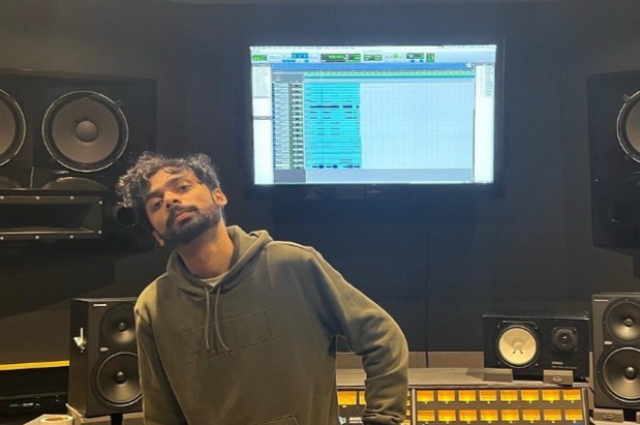At first glance, jazz and Indian classical music appear 2 poles apart. Indian music, steeped in a rich tradition stretching back millennia that flourished within the confines of royal courts and temples, eventually reaching global concert halls. Jazz, on the other hand, emerged from the vibrant culture of 20th-century America and its roots together were found in sessions, the Black church, and the nightlife of segregated cities like New Orleans, Kansas City and New York. Today, both genres are beautiful and have prestigious concert halls worldwide.
However, a closer examination reveals a fascinating union. Both jazz and Indian classical music serve as powerful channels for human expression by offering pathways for spiritual exploration. They also share a deep connection to the realm of pure music where improvisation and exploration rule supreme. It is within this shared space that Indian music's profound and enduring influence on jazz becomes relevant.
The beauty and elegance of Indian tunes with their unique terminology have delighted jazz musicians for decades. Its rhythmic complexity, particularly the captivating interplay of rhythmic patterns known as "tala" has revitalized drummers, instrumentalists and even vocalists by offering them a fresh palette of possibilities. The philosophical groundworks of Indian music have resonated with some jazz artists by allowing them to infuse their music with a deeper spiritual dimension.
While this influence can be subtle and personal for many jazz musicians, subtly shaping their musical choices, for others, it's a profound and undeniable force that infuses every aspect of their music. These artists become bridges between traditions by fostering a rich dialogue that continues to shape the landscape of both genres.
Rythum Shastri: Bridging Horizons through Music in America
The rich tapestry of American music is being vibrantly woven with threads from across the globe. One particularly captivating influence is that of Indian music by experiencing a surge in popularity and cultural exchange. This phenomenon is evident not only in packed concert halls but also in the blossoming realm of fusion music, where Eastern and Western melodies interweave.
At the forefront of this exciting fusion movement stands Rythum Shastri, a young artist whose talent is making waves. This 23-year-old Indian native, hailing from Surat, recently captivated audiences at "Rang Raas," a renowned Navratri festival held in Southern California. The event, organized by the Gujarati Society and The Garba Social showcased the power of music to surpass cultural barriers. Not only did it inspire the South Asian youth to cherish their heritage and express it through music, but it also drew in a diverse audience – Indians, Americans, and people from all walks of life – united by the infectious energy of Indian music. This is a powerful witness to the universality of music and a language that speaks volumes even when words fail.
Shastri's influence extends far beyond his musical mastery. He is a dedicated advocate for social causes as evidenced by his recent participation in a fundraising concert for earthquake relief efforts in Turkey and Syria. Held at the Jain Center of Southern California, this event leveraged the power of music to raise over $100,000 for a worthy cause. This act highlights Shastri's role as more than just a musician; he is a cultural ambassador, fostering connections between communities through the unifying power of music.
The influence of Indian music on American soil is undeniable. Artists like Rythum Shastri are not only captivating audiences but also bridging cultural divides and promoting social good. This melodious merging signifies a beautiful evolution in the American soundscape, one that promises a future rich in cultural exchange and artistic innovation.
East Meets West: A symphony of influences
Indian classical music with its rich tapestry of melodies and rhythms has woven itself into the fabric of Western music in fascinating ways. This influence goes beyond mere assumption; it's a story of mutual inspiration and artistic evolution.
A World of Ragas: Deepening the Melodic Landscape
One of the most captivating aspects of Indian music for Western composers is the concept of the raga. A raga is more than just a scale; it's a melodic framework instilled with a specific emotional character. This complexity intrigued jazz and fusion pioneers like John Coltrane and John McLaughlin. They saw in Ragas a path to enrich their improvisations by adding new layers of depth and exploration. Indian music's microtonal tones, the subtle variations in pitch beyond the standard Western 12-tone system, also presented their interest. These intricate additions challenged their understanding of melody and ultimately broadened the Western musical palette.
The Rhythmic Revolution: Breaking the Beat
Western music has traditionally placed a strong emphasis on harmony and melody. However, Indian classical music shines a spotlight on rhythm. Tala, the system of complicated rhythmic patterns forms the very foundation of Indian compositions. This rhythmic complexity has mesmerized Western musicians by inspiring them to push the boundaries of their rhythmic structures. Artists like the Beatles, the Grateful Dead, and Steve Gorn incorporated elements of Indian rhythm by including Tabla and Sitar patterns as well as the captivating concept of cross-rhythms (where two or more independent rhythmic patterns are played simultaneously). These additions instilled their music with a fresh vibrancy by expanding the horizons of Western musical expression.
The Sitar's song: A Gateway to the East
Ravi Shankar, the legendary Sitar maestro played a pivotal role in bridging the musical gap between East and West. His influence on The Beatles, particularly George Harrison is undeniable. Under Shankar's guidance, Harrison delved into the world of the Sitar by mastering the instrument and embarking on a transformative musical journey. The inclusion of the Sitar in The Beatles' music was a groundbreaking moment. Songs like "Norwegian Wood (This Bird Has Flown)" became a gateway for Western audiences to experience the mesmerizing sounds of Indian classical music. This marked a turning point in the cross-exchange of musical ideas, fostering a deeper appreciation for the rich tapestry of music across the globe.
. . .
References:

